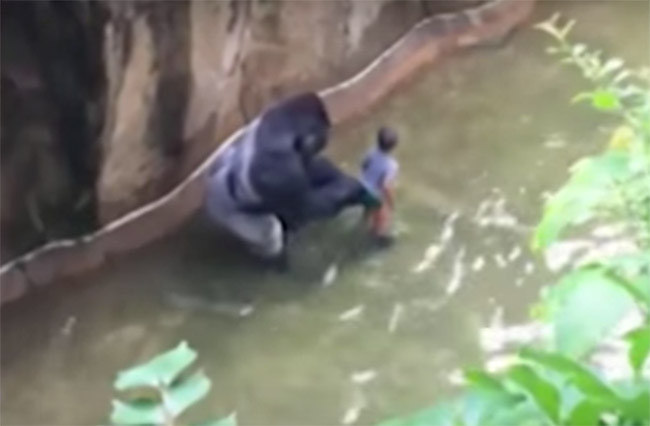If Harambe the gorilla had never been locked up in a zoo, this would never have happened

The shooting and killing of Harambe, a 17-year-old silverback gorilla at the Cincinnati Zoo, after a child fell into his enclosure, has led to a global outcry this week, with petitions and demands for #JusticeforHarambe.
It's easy to see why this story has hit a nerve. Harambe did nothing wrong and, as the zoo's director, Thane Maynard, acknowledged, wasn't attacking the boy. Nor had he chosen to be where he was, in a walled-in enclosure more than 6,000 miles away from his natural habitat. He was killed because of mistakes made by his human captors. His death was senseless, outrageous and heartbreaking, but then again, so was his life.
It's actually not unusual for zoos to kill the animals they supposedly "care" for. Animals which escape their cages are often shot, while some zoos put down animals which are "surplus" or deemed not genetically interesting. Just last month, a zoo in Norway sparked controversy by killing a healthy zebra and publicly feeding the beheaded carcass to lions. In Harambe's case, the killing took place where everyone could see it, in front of a huge crowd on a busy Saturday afternoon.
Some people are also questioning the zoo's decision to shoot Harambe dead, rather than tranquillising him (zoo officials have stated that they believed tranquillisers wouldn't have worked quickly enough and may have agitated him).
Of course, we'll never know what would have happened if the zoo hadn't shot him, but we do know that in 1996, when a three-year-old boy fell into the gorilla enclosure at Brookfield Zoo in Illinois, a female gorilla, Binti Jua, picked him up, cradled him in her arms and carried him to an access entrance where staff were waiting. And 10 years earlier, another gorilla, Jambo, stood guard over a five-year-old boy who fell into his enclosure at Jersey Zoo.
Primate expert Dr Gisela Kaplan has commented about this incident: "I can tell you silverbacks are protectors of their group. If there's an unusual thing happening, [Harambe] needs to investigate. The fact that he went over to the child is absolutely natural behaviour but it doesn't mean he was aggressive."
Harambe's life was just as tragic as his death. Every single decision, including when to eat, what to eat, whom to mate with, and when to sleep, was made for him by human caretakers. Gorillas love, play and grieve, so it's no wonder that so many of those incarcerated in zoos exhibit behaviour indicative of mental anguish, such as pacing and rocking. Gorillas in captivity have been documented reportedly eating their own vomit, which is unheard of in the wild. They're also prone to cardiac disease: in 2011, the US Smithsonian Institution revealed that 30 of its gorillas were on heart medication. Captivity is devastating for these intelligent primates, no matter how large or how "enriched" their enclosure.
Had Harambe not been locked up to serve as a living exhibit, completely at the mercy of human whim, this incident would never have occurred. The message everyone should take away from his story is simple: don't give zoos your money. Stop supporting them, and eventually they'll have to stop imprisoning – and killing – animals.
Mimi Bekhechi is Peta UK's director.
© Copyright IBTimes 2025. All rights reserved.




















